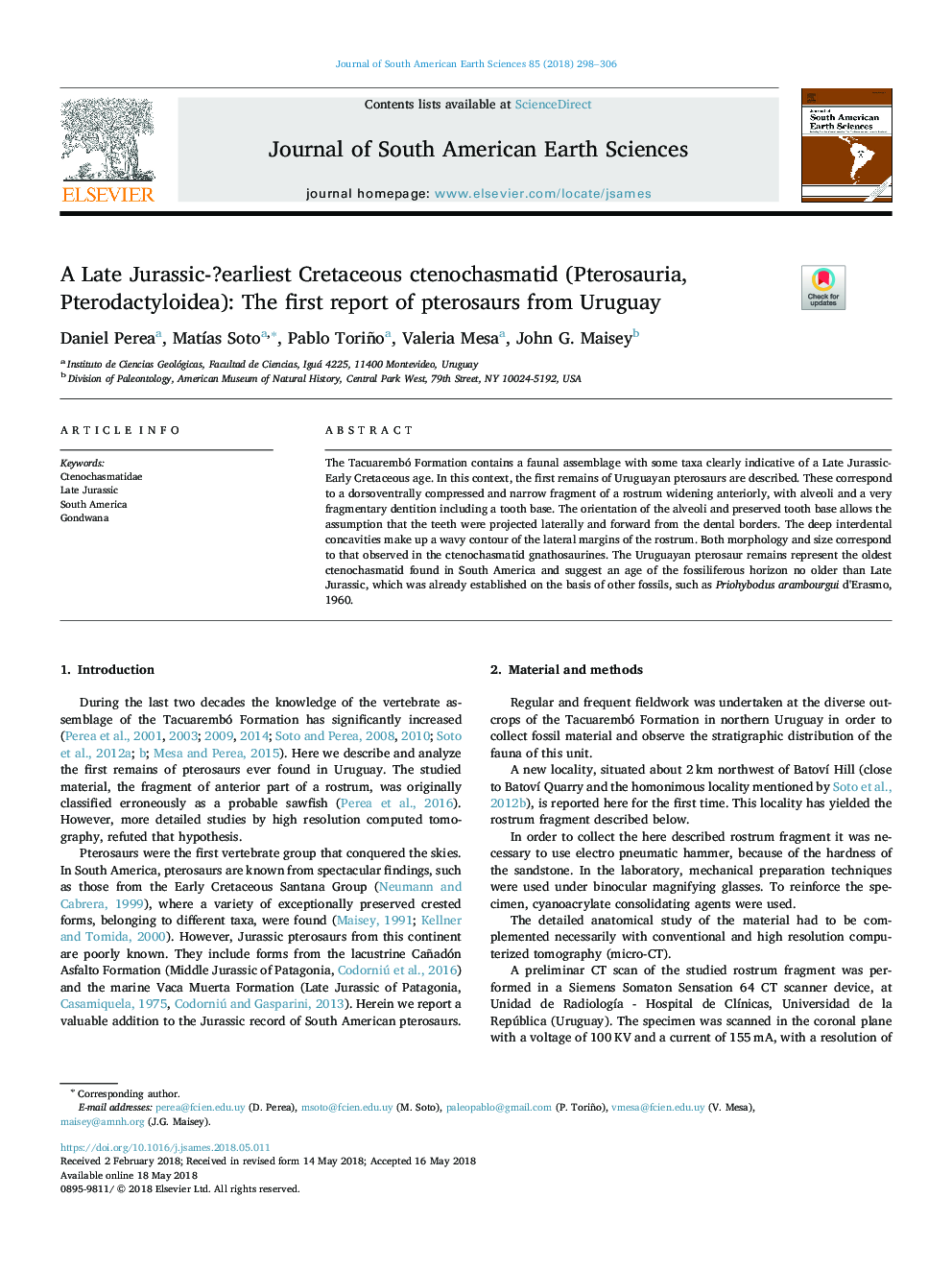| Article ID | Journal | Published Year | Pages | File Type |
|---|---|---|---|---|
| 8907636 | Journal of South American Earth Sciences | 2018 | 9 Pages |
Abstract
The Tacuarembó Formation contains a faunal assemblage with some taxa clearly indicative of a Late Jurassic-Early Cretaceous age. In this context, the first remains of Uruguayan pterosaurs are described. These correspond to a dorsoventrally compressed and narrow fragment of a rostrum widening anteriorly, with alveoli and a very fragmentary dentition including a tooth base. The orientation of the alveoli and preserved tooth base allows the assumption that the teeth were projected laterally and forward from the dental borders. The deep interdental concavities make up a wavy contour of the lateral margins of the rostrum. Both morphology and size correspond to that observed in the ctenochasmatid gnathosaurines. The Uruguayan pterosaur remains represent the oldest ctenochasmatid found in South America and suggest an age of the fossiliferous horizon no older than Late Jurassic, which was already established on the basis of other fossils, such as Priohybodus arambourgui d'Erasmo, 1960.
Keywords
Related Topics
Physical Sciences and Engineering
Earth and Planetary Sciences
Earth and Planetary Sciences (General)
Authors
Daniel Perea, MatÃas Soto, Pablo Toriño, Valeria Mesa, John G. Maisey,
